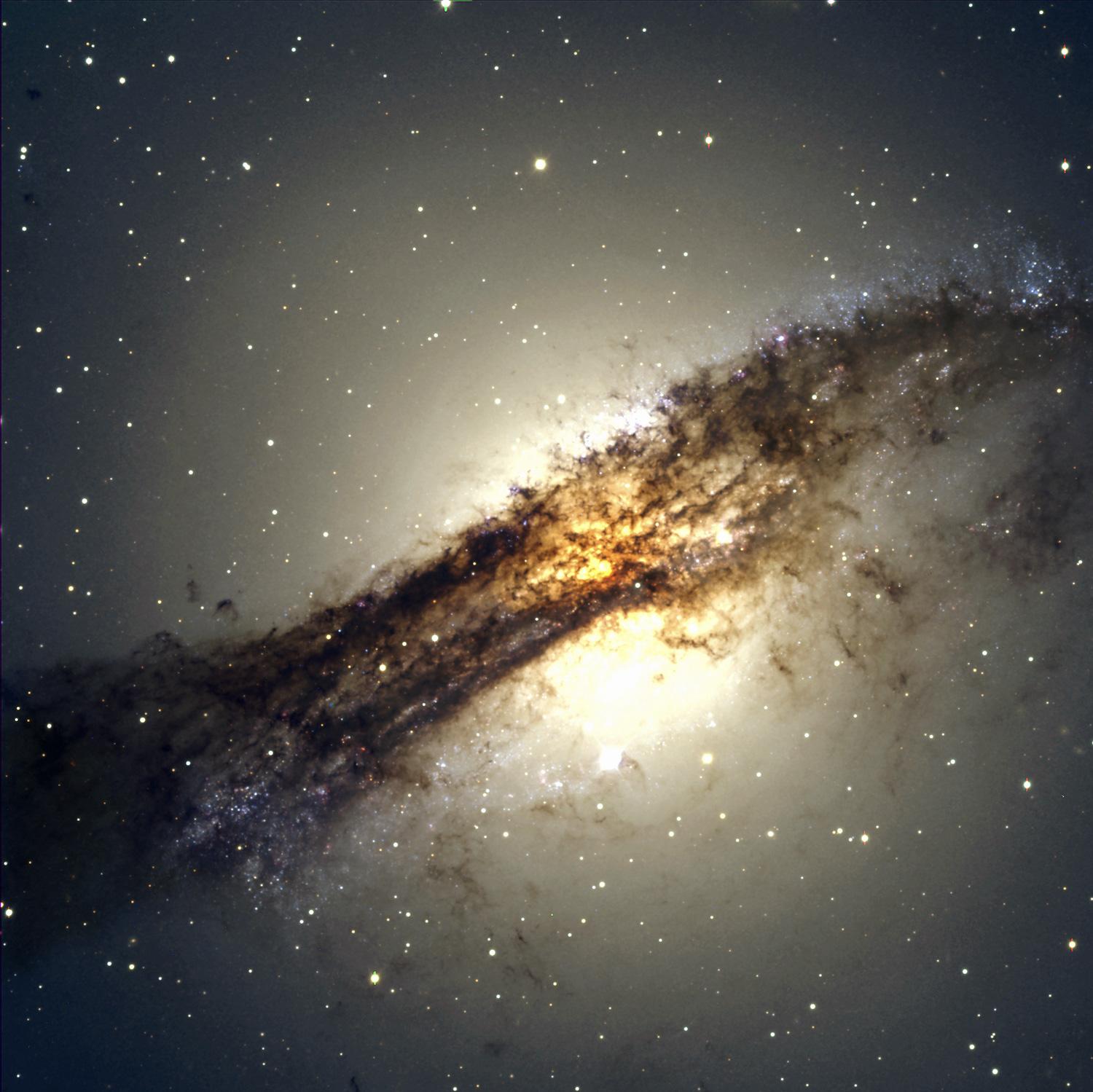Exploring galaxy evolution
At a glance
- The SKA telescopes will enable the study of the earliest galaxies, tracking how they formed and evolved over billions of years.
- SKA observations will analyse the effects of dark matter, the "cosmic scaffolding" that holds galaxies together.
- In this way, astronomers will learn more about dark matter's role within and around galaxies, helping to place constraints on what it might be.

The SKA telescopes will revolutionise studies of how galaxies form and turn their gas into stars by detecting hydrogen - the fuel for star formation - in surveys encompassing as many as a billion galaxies, at distances much greater than is possible to detect today. They will allow galaxy evolution to be observed across billions of years, including in the distant Universe.
Radio telescopes have played a pivotal role in our understanding of galaxy evolution. Their ability to “see” regions which may be obscuring the optical view of a galaxy has brought significant insights into how galaxies form and evolve. Despite this progress, it is still a mystery as to how young galaxies, in the millions of years following the Big Bang, continued to evolve: where did they get their material? How fast do they rotate? What is the morphology of their gas?
The SKA telescopes' unrivalled sensitivity and resolution will be able to track young, newly forming galaxies at cosmological distances, and, through mapping the distribution of hydrogen, help us to unravel these mysteries.
Radio telescopes allow us to see through the dust clouds in space, giving us an unobstructed view of galaxies.
Galaxies in a spin
Studying the hydrogen distribution in and around galaxies can provide a wealth of information about their gas content and kinematics.
Within galaxies, gas moving at different velocities is detected at slightly different frequencies because of the Doppler effect. That allows astronomers to determine how quickly a galaxy is rotating, by measuring the range of frequencies over which the hydrogen is detected. From these measurements, it is also possible to estimate the total mass of the galaxy, as it must have enough mass to ensure that it remains whole (too little and it would fly apart!).
This total mass can be compared with what astronomers estimate a galaxy should have based on the stars and gas that we can observe in the galaxies. Often there is a discrepancy between the two and the hydrogen gas is rotating faster, sometimes much faster, than the amount of mass contributed by the stars and gas would suggest it should.
That means there has to be some other kind of additional matter within galaxies: dark matter.
What is dark matter?
Nobody yet knows, but we can infer its properties through observations of other galaxies.
Dark matter produces no light, but creates a gravitational attraction that holds individual galaxies together, and also binds them into clusters, forming huge “halos” around them like cosmic scaffolding. This makes it highly influential to galaxy formation and evolution.
It is estimated to make up around 26% of the Universe, compared to 5% “normal” matter like stars and planets and everything else you can see (the rest being the equally enigmatic dark energy).
At present, dark matter hasn’t been detected directly, but studies with the SKA telescopes will help to provide more information about its role within and around galaxies, helping to place constraints on what it might be.
Among the stars
Galaxies are home to billions, or even trillions of stars - the Milky Way alone is estimated to hold more than 100 billion - but star formation is not a constant or steady process. There is evidence that star formation was fundamentally different in the young Universe, often occurring within intense concentrations of super star clusters that have few, if any, counterparts today.
The SKA telescopes will play a key role in learning more about this mode of star formation, establishing how and when the first stars were born, how the star formation rate of the Universe has changed over time, and what has been driving those changes.
The sensitivity of the SKA telescopes will allow astronomers to study star formation processes in more detail, including through mapping hydrogen reservoirs around galaxies, which can be drawn into the galaxy and used to form stars. Radio astronomy is the only way to study these gas reservoirs, as they can’t be seen by optical or infrared telescopes at all, giving the SKA telescopes a unique view.
The same can be said for the effects of magnetism within and between galaxies, which is best studied in the radio spectrum. Magnetic fields of vastly varying strengths are found everywhere in space, including within the giant molecular gas clouds which form stars, and are known to influence the number and size of stars created, as well as possibly even influencing the formation of spiral arms in galaxies.




